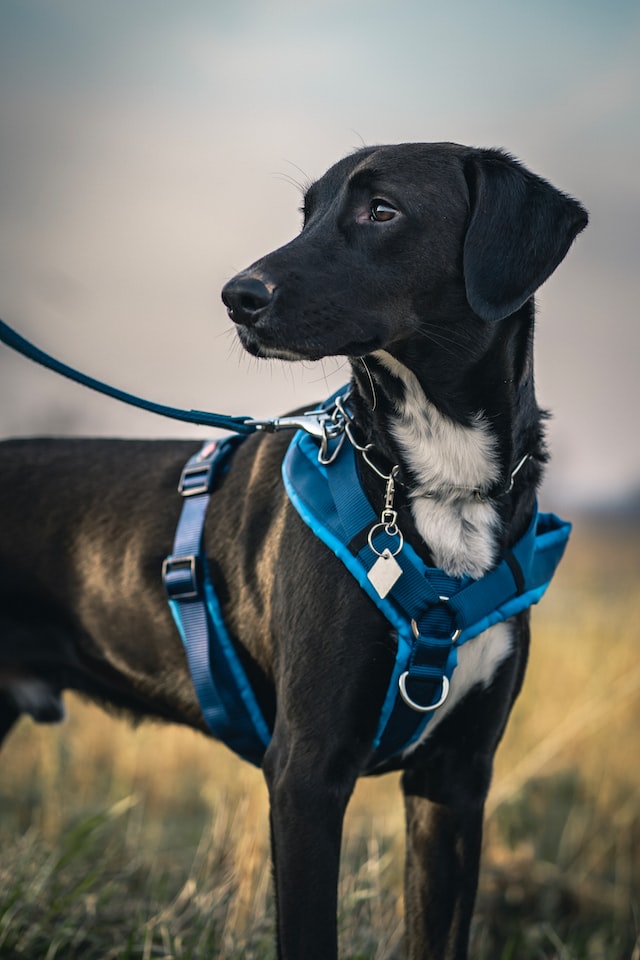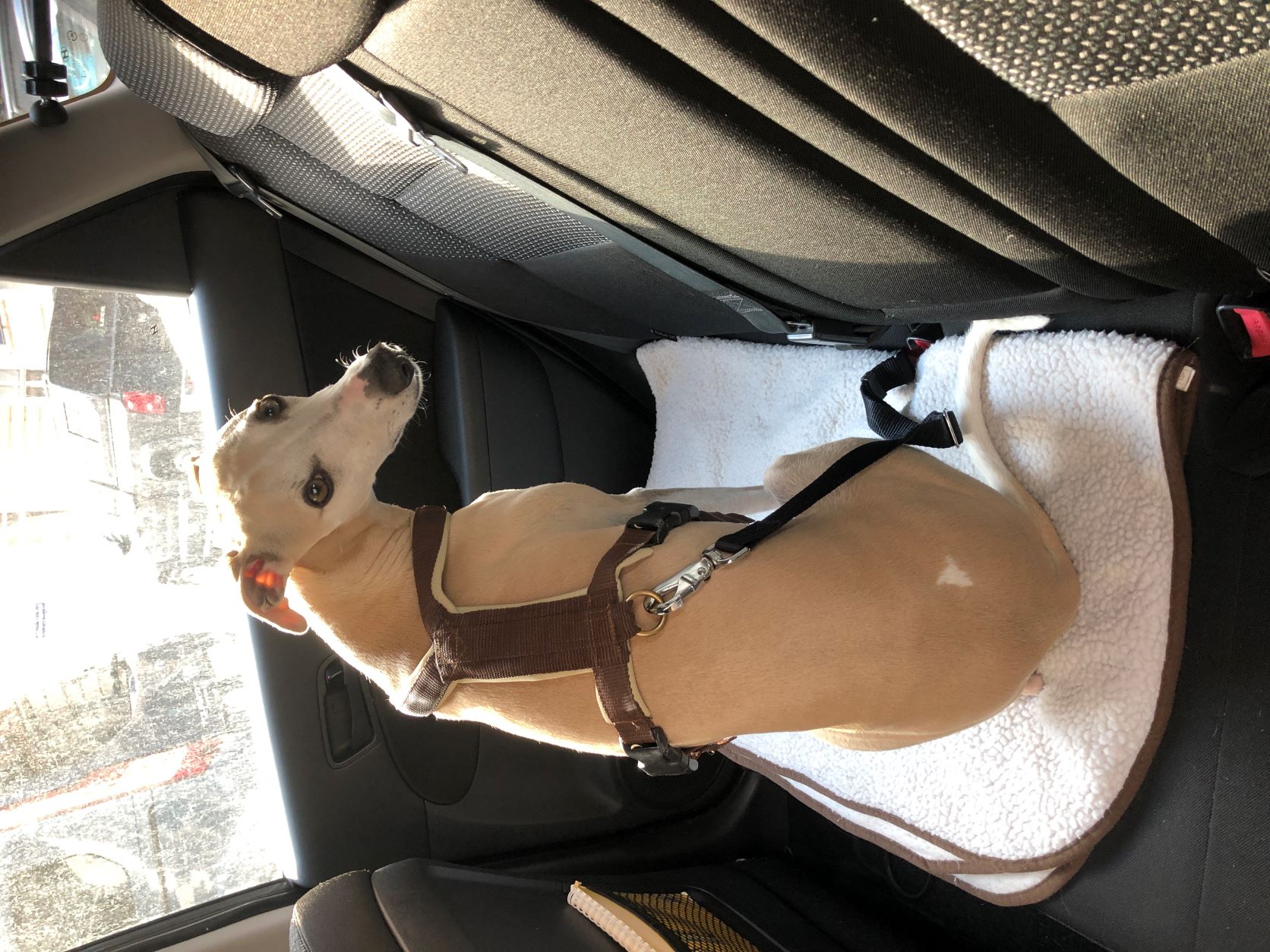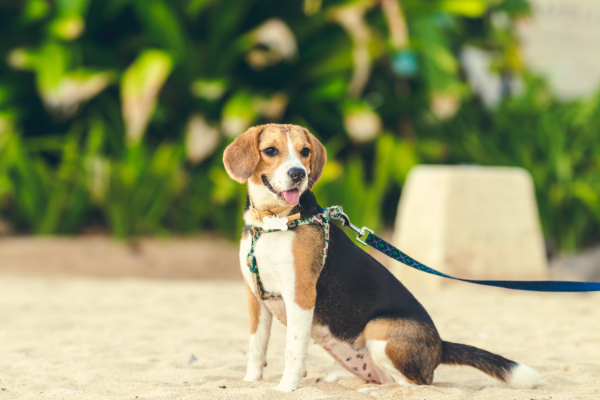Choosing the right Harness for your Dog
One Google search, one trip to the pet store, one visit to the dog park, and you’ll discover that the number of harness types available is seemingly endless. Before you throw your hands up in frustration, take a couple of minutes to read our blog and by the end of it, you’ll have no trouble finding the right harness for your four-legged companion.

Let’s look at what all harnesses have in common: They allow you to leash your dog on walks, hikes, runs, and the like. The multiple straps and the position of the leash attachment take off the pressure from your dog’s neck by distributing it more evenly throughout their bodies. For that reason, harnesses are the safer and healthier option than collars for dogs that regularly pull on the leash and puppies that haven’t been leash-trained yet. With different body types, figures, behaviours and activity levels in the mix, being able to choose from a number of different models for your dog comes in handy.
If you want to know more about the pros and cons of harnesses versus collars, check out our blog post On collars and harnesses.
Front and back clip harnesses
The names refer to the position of where the leash is clipped into on your dog’s harness. Front clip harnesses are attached on the strap on your dog’s chest and are often used as a training tool for dogs that have the habit of pulling on the leash. The pressure they feel from the front when pulling ahead will make them turn and direct their attention back to you, giving you more control over the pace of the walk. The downside is that the leash can get tangled in your dog’s legs if you don’t keep an eye out and let it go slack.

The back clip harness is the one you’ll see most often. If your dog is generally a calm and attentive walking companion, you’ll have no trouble with this kind of harness. Dogs that are intent on pulling you along behind them won’t easily be discouraged by a back clip harness, though. But who knows, maybe your dog will graduate from a front clip to a back clip harness after some training sessions.
Knowing how your dog behaves while on a leash can already help you with this decision, although if you are unsure, there are also models that allow for the leash to be clipped in on both sides. The next step is to choose the specific harness model you think will best fit the needs of your dog.
Dual Strap Harness
These models are a favourite among dog owners, as they are easy to put on, secure and adjustable. Most models are put on over your dog’s head, with a second (or optionally a third) loop closing around their rib cage. These straps can usually be individually adjusted to fit your dog’s body, allowing enough room for movement while simultaneously guaranteeing that your dog won’t be able to wind their way out of it. Especially anxious and easily stressed out dogs will ultimately be safer with this kind of harness.

Step In Harness
If your dog isn’t a fan of things being put on over their heads, a Step In Harness can relief both of you of the stress caused by gearing up before a walk. By placing the harness on the floor and having your dog step into the two loops with their front legs, the harness is simply pulled up and fastened at the top. When buying a Step In Harness, it’s important to check whether it’s adjustable or comes in a fixed size, like most vest harnesses. If it isn’t, you should take measurements of your dog’s body before your purchase to make sure that the fit is right.

Padded Chest Harness
The Padded Chest Harness offers additional relief for stubborn leash-pullers. The build is usually the same as the Dual Strap Harnesses but instead of a strap running down between your dog’s front legs, a broad chest plate ensures that pressure is better distributed. For that reason, these models are also the safest option to use during a car ride. If you want to find out more about the safe transport of your dog, go check out our blog post Keeping your dog safe in the car.
Recent studies on the locomotion of dogs have found that the shoulder blades play a more important role in a dog's movement than previously thought. The padded chest harness is therefore not the best choice for long hikes, as with this harness the shoulder blades are normally not sufficiently unobstructed when your dog is in motion.
Making sure the fit is right
For a harness to work properly with regard to safety and comfort, the fit has to be right. If the harness is too loose, your dog will be able to wind their way out of it. If it’s too tight, your dog’s movements will be restrained, which will make wearing a harness an uncomfortable experience for them. Additionally, the straps can cause chafing if they’re too tight or sit too close to your dog’s front legs, causing them to loose fur or for the skin to be irritated.
You can avoid this by taking the following measurements of your dog’s body:
- around the neck
- around the chest (beginning at the widest part of the rib cage, up over the back and back to where you started)
By comparing your measurements with those stated on the product information, you can choose a harness that will fit your dog and their body type. To set it up correctly, put the harness on your dog in a loose fit, then gradually tighten it to the right size. You should be able to fit two fingers between your dog and the harness for it to be comfortable and effective. By checking your dog’s behaviour during the following walks and looking for signs of discomfort, you can adjust the harness if necessary.
The most useful information for choosing the right harness is your own knowledge about your dog, their character and behaviour. This can already point you in the right direction of what model will best suit them. Now all that’s left to do is pick a colour and decide where your next walk with the new gear will take the both of you.